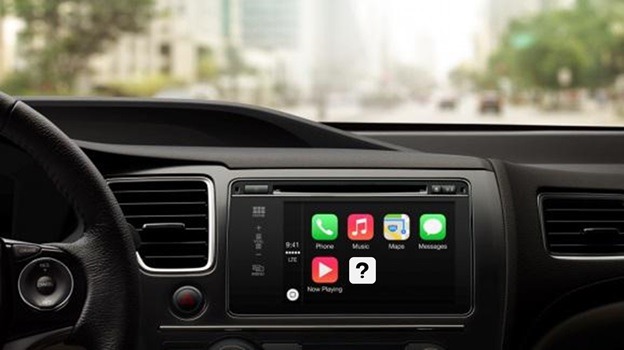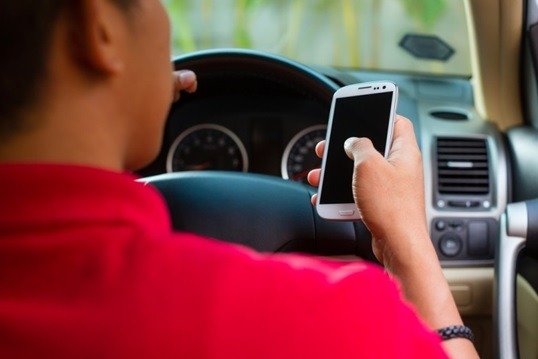It’s nice to be known for something. In the case of Jacobs Media, our work in mobile apps, our development deal with Ford, and our DASH Conference has shaped our world view of the confluence of radio and automotive. And in the process, the “connected car” has become an area that is as associated with our company as Classic Rock.
It’s an exciting space in which to travel. It also means that any time there’s an interesting article on the topic, friends and colleagues share it with us quickly. That was the case last week with a Wall Street Journal article called “Automakers Losing Battle For Dashboard Apps.”
If you follow our blog and/or you’ve attended DASH, you know all about Apple CarPlay and Android Auto. Consultant John Ellis talked with great passion about these platforms during a solo session, and we wrote a detailed post-DASH post on the topic last month called “Dashboard Invaders.” That post included a video about how these two systems work – and as importantly, what they mean to radio.
At DASH, we also featured the J.D. Power 2015 “Driver Interactive Vehicle Experience Report” that concluded that consumers with “connected cars” aren’t using many of the available features. For the automakers, this is continued reinforcement of the overriding truth these dashboard systems must be useful and simple to use or they run the risk of being ignored.
And that’s where both Apple and Google sniff opportunity. After all, they’re two trusted technology brands that provide the ecosystems for mobile gadgets carried around by millions of Americans. By gaining presence in dashboards, they each have a huge scalable upside and the chance to play an even greater role in consumers’ lives.
The WSJ article took the angle that automakers have a lot to lose – including their brand visibility in the dash as well as the scads of consumer usage data that is recorded as consumers drive from Point A to Point B, as well as the media choices they make.
If you read between the lines, Ford’s director of connected vehicles, Don Butler, outlines the challenge that automakers are facing. In speaking about Apple CarPlay and Android Auto and how they will play against his company’s SYNC system, Butler says it this way:
“We are competing for mind-share inside the vehicle.”
But he could just as easily be talking about what AM/FM radio brands need to do in order to successfully compete and continue to thrive in cars and trucks. Broadcasters are fighting for the same mind-share in a dashboard environment that is mushrooming with entertainment and information options.
SYNC uses voice activation for texts and messaging. But of course, that’s where Siri and Google Now live. And while Ford, in particular, has worked on app integration in their center stacks with companies like jācapps, Apple and Google provide convenient workarounds. Their familiar interfaces mimic your smartphone, so you easily know how to navigate your dashboard. The automakers are understandably feeling pinched on their home turf.
And in the end, they may have little choice but to integrate both of these systems into most of their makes and models rolling off the assembly line. That’s because the automakers know the bitter truth:
Consumers are more loyal to their Apple and Google smartph0nes than they are to the Scions, Enclaves, and BMWs sitting in their driveways.
In much the same way that automakers are challenged to keep their brands front and center in the dash, radio should be feeling queasy about its dashboard real estate. In many ways, it faces that same industry challenge with its top-of-mind-awareness, content, and usability in the center stack. From satellite radio to pure-plays to Waze, the race is on to dominate the dash.
The automakers are well aware their UX – or user experience – hasn’t kept up with consumer needs during the initial years of the “connected car” revolution. A commenter on the WSJ article, Terry Traub, made this observation:
“I yearn for the good old days when dashboard controls were simple, physical knobs and buttons and sliders. The very worst thing is being forced to take your eyes off the road simply to turn down the radio or adjust the fan.”
Terry speaks for many consumers, as evidence by J.D. Power complaints about dashboard complexity. IHS Automotive senior analyst, Mark Boyadjis, notes that car makers “have spent a lot of blood, sweat and tears developing their own systems, with their own brands and that’s threatened.” They have a lot to lose.
Radio needs to start looking at the dashboard space with the same sensibilities as the automakers. How to keep its brands and its content relevant, compelling, easy to use, and accessible as possible are all part of the questions that need to be addressed.
It starts with a mobile strategy, to be sure, but an automotive plan – from the OEM level to the neighborhood dealership – is part of the equation, too.
Looking back on the radio industry in 2015, I’d like to think that automotive has moved up the priority ladder. The NAB/RAB Radio Show, RAIN, Convergence, Canadian Music Week, and many state broadcaster association conferences all featured an automotive panel of one kind or another.
Last month’s DASH Conference here in Detroit focused on all things “connected car.” And we’ll be back at CES in Las Vegas early next month to learn more about the road ahead and where the broadcasting industry fits in.
For both radio and automotive, there’s a lot of work to be done as disruption is in the air and in the center stack.
That digital clock in the dashboard is ticking.
- What To Do If Your Radio Station Goes Through A Midlife Crisis - April 25, 2025
- A 2020 Lesson?It Could All Be Gone In A Flash - April 24, 2025
- How AI Can Give Radio Personalities More…PERSONALITY - April 23, 2025






I’m encouraged by this piece….because it makes me feel less like an idiot. I thought it was just me after I bought a new car which had more “stuff” on the dash than I could deal with. I had to pull over to change the station on the radio!!!! I had to spend a morning at the dealer to be “trained” on how to use the endless “features”. I’m happy to report that I can now change the station while moving! 🙂
This is encouraging. The future of all this could be an in-dash experience that you’ll be able to customize. Until then, Apple and Google have much upside. Enjoy your new car!
I travel some for work and end up renting a lot of cars – and I love technology. But every manufacturer seems to have come up with a different way of doing a lot of the same things. It feels like the “do you push the red or green button for credit?” question times 20. When I can, I give myself about 20 minutes to pair my phone and figure out how to access the tech in rental cars. But I’m not sure making it that hard is serving the auto industry.
I wonder if the auto makers wouldn’t do well to consider agreeing on some basic ways to do things on their connected cars – and let their brand identities revolve around what they offer more than how to access it. I love all the tech but the idea of having a duplicate of my phone screen on a touch screen in my center stack is really appealing – and it would open up most of the tech in her car to my wife, who currently uses almost none of it.
Simple and universal might be the best way to for the auto industry to not cede the center stack to Apple and Google.
Bob, you have to wonder if the advent of CarPlay and Android Auto might not encourage the OEMs to work together more than they have. Up to now, it’s been every carmaker for himself. With disruption coming from the people who make our smartphones, it would make sense to re-examine the givens. Thanks for the comment.